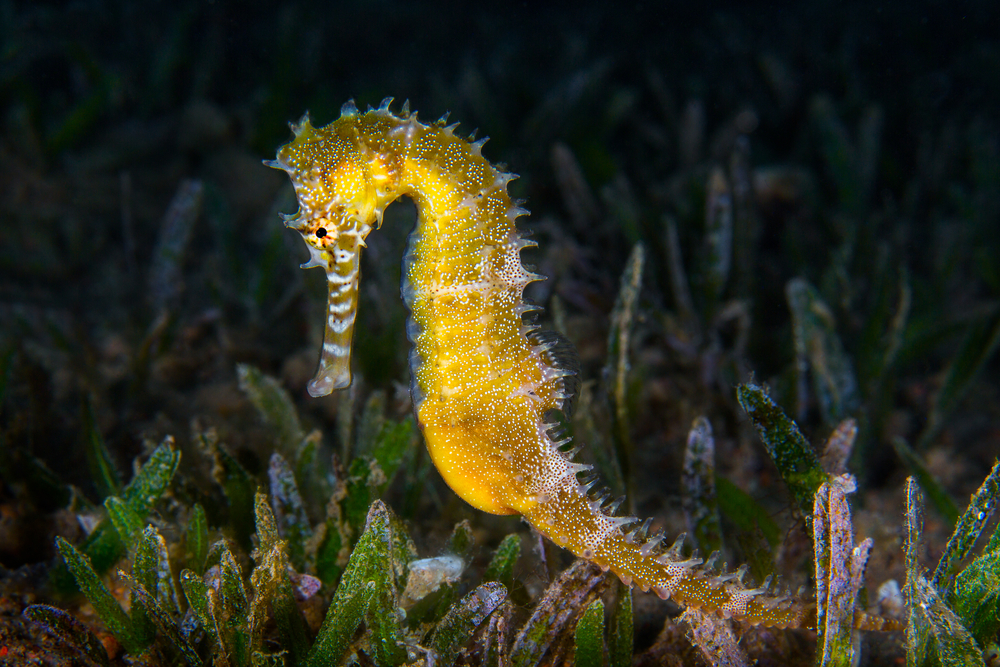Underwater Hockey: Submerging into the Depths of an Unconventional Sport
Imagine a sport that combines the strategy of ice hockey, the endurance of swimming, and the breath-holding skills of free diving. Welcome to the world of underwater hockey, a little-known yet fiercely competitive aquatic sport that's been making waves since the 1950s. This unique discipline challenges athletes to push their limits both physically and mentally, all while submerged in the silent depths of a swimming pool.

The sport’s early days were characterized by improvisation and experimentation. Players used makeshift equipment, including wooden sticks and lead pucks. As interest grew, specialized gear was developed, including curved sticks made of plastic or wood, protective gloves, and masks designed specifically for underwater play.
By the 1960s, underwater hockey had established itself as a legitimate competitive sport, with organized leagues and tournaments emerging in various countries. The first World Championship was held in Canada in 1980, marking a significant milestone in the sport’s history and cementing its place in the international sporting arena.
The Mechanics of Play: A Submerged Strategy Game
At its core, underwater hockey is a team sport played on the bottom of a swimming pool. Two teams of six players each compete to maneuver a puck across the pool floor and into the opposing team’s goal. The playing area is typically 25 meters long and 15 meters wide, with goals at each end measuring 3 meters in width.
Players are equipped with fins, masks, snorkels, and protective gear, including gloves, headcaps, and mouthguards. The most distinctive piece of equipment is the stick, a short, curved implement about 30 centimeters long, used to push, flick, or pass the puck.
The game is played in four quarters, each lasting 8 minutes, with a 3-minute break between quarters. Unlike many other sports, there are no timeouts in underwater hockey, adding to the intense, non-stop nature of the game.
One of the most challenging aspects of underwater hockey is the necessity for players to hold their breath while competing. Athletes must surface regularly to breathe, creating a constant ebb and flow of players diving and resurfacing. This unique dynamic adds an extra layer of strategy, as teams must coordinate their movements and breathing patterns to maintain a strong presence on the pool floor.
Physical Demands and Training: A Full-Body Workout
Underwater hockey is an incredibly demanding sport that requires a unique combination of strength, endurance, and breath control. Players must be excellent swimmers with the ability to move efficiently underwater while holding their breath for extended periods.
The sport engages virtually every muscle group in the body. The legs and core are crucial for propulsion and stability, while the arms and upper body are used for maneuvering the stick and battling for position. The constant diving and resurfacing also provide an excellent cardiovascular workout.
Training for underwater hockey typically involves a mix of pool sessions and dry-land exercises. In the pool, players focus on improving their underwater swimming technique, breath-holding capacity, and puck-handling skills. Drills often include underwater sprints, stick-handling exercises, and simulated game scenarios.
Out of the water, athletes engage in strength training to build core stability and overall muscle endurance. Cardiovascular exercises like running and cycling help improve overall fitness, while yoga and meditation can enhance breath control and mental focus.
One of the most critical aspects of training is developing the ability to function effectively while oxygen-deprived. Players often practice techniques to increase their lung capacity and improve their body’s efficiency in using oxygen. This might include exercises like static breath-holding or dynamic apnea training, where athletes perform underwater laps while holding their breath.
The Mental Game: Strategy and Teamwork Under Pressure
While the physical demands of underwater hockey are evident, the mental aspects of the sport are equally challenging. Players must make split-second decisions while operating in a three-dimensional environment with limited visibility and communication.
Strategy in underwater hockey is complex and multifaceted. Teams must coordinate their movements to maintain possession of the puck while also defending their goal. This requires a deep understanding of positioning and anticipation, as well as the ability to read the game and predict opponents’ movements.
Communication is a unique challenge in underwater hockey. With players unable to speak underwater, teams rely heavily on hand signals, pre-arranged tactics, and an almost telepathic understanding between teammates. This necessitates extensive practice and teambuilding exercises to develop strong non-verbal communication skills.
The sport also demands exceptional mental toughness. Players must remain calm and focused while operating in an environment that can be disorienting and even anxiety-inducing for some. The ability to control one’s breathing, stay relaxed under pressure, and make clear decisions while oxygen-deprived is crucial for success.
Global Growth and Competitive Landscape
Since its inception, underwater hockey has grown from a niche activity to a globally recognized sport. Today, it is played in over 20 countries across five continents, with strong footholds in Australia, New Zealand, South Africa, the United Kingdom, and parts of Europe and North America.
The Confederation Mondiale des Activités Subaquatiques (CMAS) serves as the international governing body for underwater hockey, overseeing World Championships held every two years. These championships feature competitions in various categories, including men’s, women’s, and junior divisions.
Australia and New Zealand have historically dominated the sport at the international level, consistently performing well in World Championships. However, countries like France, Colombia, and South Africa have made significant strides in recent years, challenging the traditional powerhouses and contributing to the sport’s global competitiveness.
Despite its growth, underwater hockey remains a relatively unknown sport to the general public. This presents both challenges and opportunities. On one hand, the sport struggles with limited funding and media attention. On the other, it maintains a close-knit, passionate community of players and supporters who are deeply committed to its development and promotion.
Technological Advancements: Enhancing the Game
As underwater hockey has evolved, so too has the technology associated with it. Advancements in equipment design and materials have significantly improved players’ performance and safety.
Modern underwater hockey sticks are now made from advanced composites, offering improved durability and flexibility. Fins have been redesigned to provide better propulsion and maneuverability, while masks and snorkels have been optimized for improved visibility and breathing efficiency.
Perhaps the most significant technological advancement has been in puck design. Modern pucks are made from lead-free materials that are both environmentally friendly and optimized for underwater play. These pucks are designed to glide smoothly along the pool bottom while being heavy enough to resist floating.
Technology has also impacted how the sport is officiated and viewed. Underwater cameras are now commonly used to assist referees in making decisions and to provide spectators with a unique perspective on the action. Some tournaments have experimented with live streaming of underwater footage, bringing the excitement of the sport to a broader audience.
Health Benefits: More Than Just a Game
Beyond its competitive aspects, underwater hockey offers numerous health benefits that make it an attractive option for fitness enthusiasts and recreational athletes alike.
The sport provides an excellent full-body workout, combining elements of cardiovascular exercise with resistance training. The constant movement and changes in depth provide a low-impact yet highly effective form of exercise that can improve overall fitness and muscle tone.
Underwater hockey is particularly beneficial for lung capacity and breath control. Regular players often report significant improvements in their ability to hold their breath and manage their oxygen consumption efficiently. These skills can have positive effects on overall respiratory health and can be beneficial in other areas of life.
The sport also offers mental health benefits. The focus required during play can serve as a form of moving meditation, helping to reduce stress and improve mental clarity. The team aspect of the sport provides social benefits, fostering a sense of community and belonging among players.
Challenges and Future Prospects
Despite its unique appeal and growing popularity, underwater hockey faces several challenges as it seeks to expand its reach and recognition.
One of the primary obstacles is the lack of visibility. The underwater nature of the sport makes it challenging to spectate and broadcast effectively, limiting its appeal to casual viewers and potential sponsors. However, advancements in underwater filming technology and creative approaches to presentation are helping to address this issue.
Another challenge is the specialized facilities required for play. Not all swimming pools are suitable for underwater hockey, and dedicated facilities can be expensive to build and maintain. This can limit access to the sport, particularly in areas with fewer resources.
The future of underwater hockey, however, looks promising. The sport continues to attract new players, particularly among young adults and university students. Its unique blend of physical challenge, strategic depth, and teamwork appeals to those looking for an alternative to traditional sports.
Efforts are underway to increase the sport’s profile, with some advocates pushing for its inclusion in multi-sport events like the Commonwealth Games or even the Olympics. While these goals may be ambitious, they reflect the passion and commitment of the underwater hockey community.
Conclusion: Diving into the Future
Underwater hockey represents a fascinating intersection of athleticism, strategy, and aquatic skill. Its growth from a winter training activity for British divers to a globally recognized sport is a testament to its unique appeal and the dedication of its participants.
As the sport continues to evolve, it offers a compelling alternative to more mainstream athletic pursuits. Its emphasis on teamwork, physical fitness, and mental acuity, combined with the unique challenges of the underwater environment, provides a distinctive sporting experience that is both demanding and rewarding.
Whether underwater hockey will one day become a household name remains to be seen. However, for those who have discovered this submerged sport, it offers a world of excitement, challenge, and camaraderie that is truly one of a kind. As awareness grows and technology advances, underwater hockey stands poised to make an even bigger splash in the world of sports, inviting more people to dive in and experience the thrill of competition beneath the surface.





